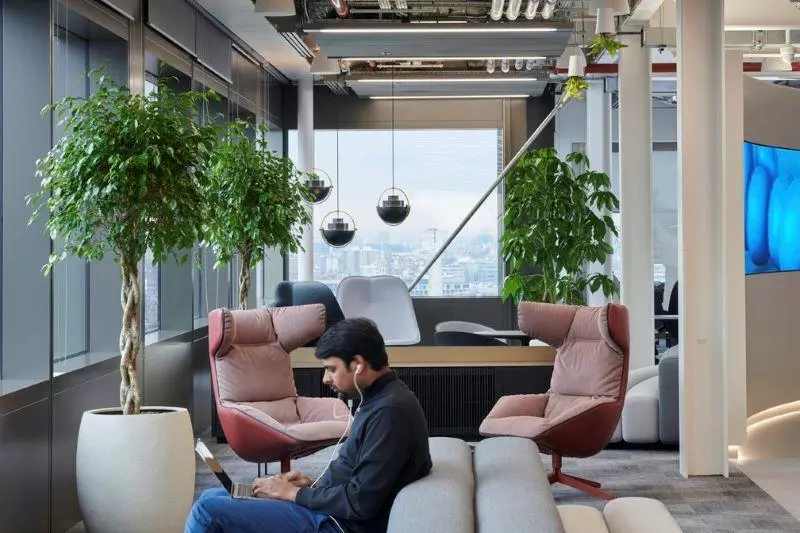Biophilic concepts are steadily making their way into popular design. The concepts can take a variety of forms as local culture, ecology, project intent, and architect and designer perspective all direct how biophilic elements are applied to a space. The research is clear – biophilic design has many positive outcomes, most importantly it makes us happier. Biophilia seeks to reconnect us with nature, and by doing so provides all kinds of benefits—behavioral, mental, and physical. Studies have shown that biophilic design improves human well-being and boosts productivity.Moreover, these biophilic principles need to be deeply embedded in architectural and design philosophies. Access to nature needs to be prioritized in order to create the most optimal environments for humans. In other words, biophilia can’t be an afterthought.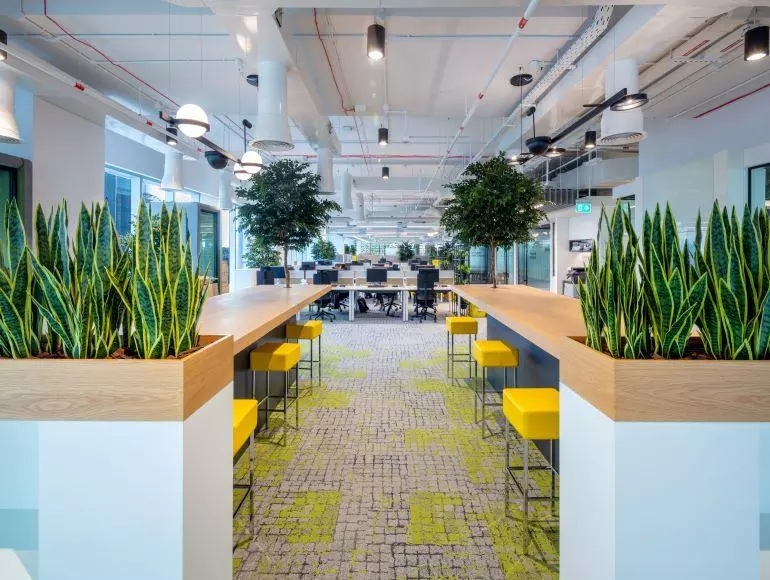
Here are some ways architects and designers might integrate biophilia more holistically.
Nature as a necessity, not a tool
Commercial designers that design from a perspective of nature can gain insight and find inspiration to create re-imagined spaces. Using nature as the design driver and not simply another tool––is a necessity. While it is important to strategically include natural elements in a way that is aesthetically pleasing, nature needs to come before design. Therefore, instead of asking a question like, “How can we complement this space with natural elements?” one might ask, “What natural elements are vital for this space?” When nature comes first, more biophilic needs are satisfied, and the environment appears more organic. It shouldn’t seem as if nature was thrown into the mix at the last minute.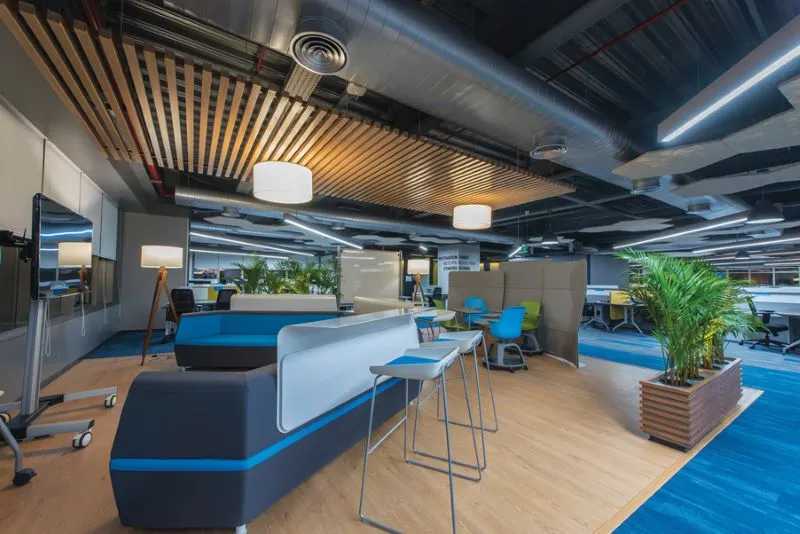
Balancing the organic and the artificial is key
Although biophilia aims to restore a connection with nature, it must work hand in hand with constructed materials. As with any design, the elements must be in balance and have relevance. Biophilic design is the inclusion of “aspects of nature that most impact our satisfaction with the built environment. Designers must uncover how best to implement the principles of Biophilia for each particular space.The natural elements and the constructed architecture work seamlessly together, creating the ideal balance.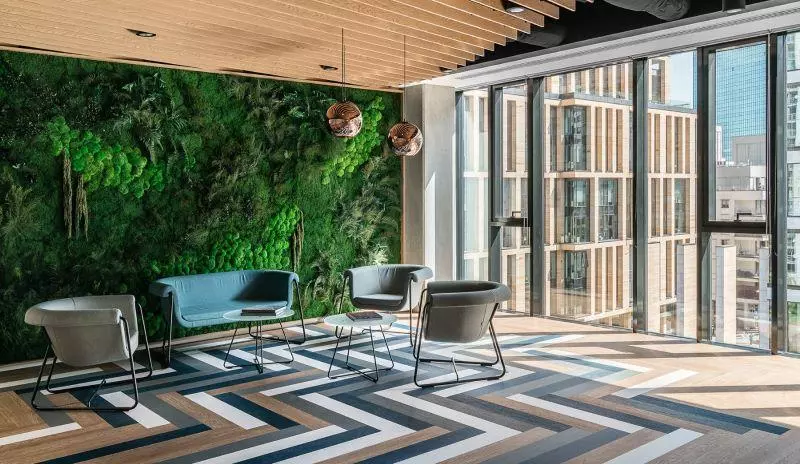
Biophilic design must meet real human needs
The basic premise of biophilia is that humans innately need to participate in nature. By extension, biophilic design must consider these needs and work to fulfil them. This overarching need for nature can be broken down into 14 patterns, which provide a framework for architects and designers. Each of these patterns addresses a fundamental aspect of biophilic needs, and when one or more patterns are utilized in a human-created space, these needs are met.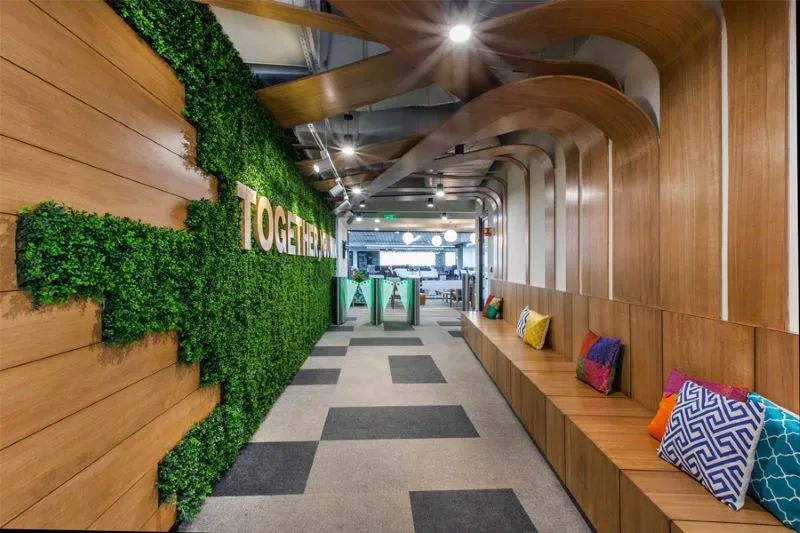
Sustainably-sourced & reclaimed woods
Wood and vegetation create a natural connection, while the large windows allow daylight to pour in.
Wood may be the most popular of the biophilically-designed construction elements. From simple aesthetic flourishes to large-scale wooden architectural instalments, wood is a central part of the biophilic revolution.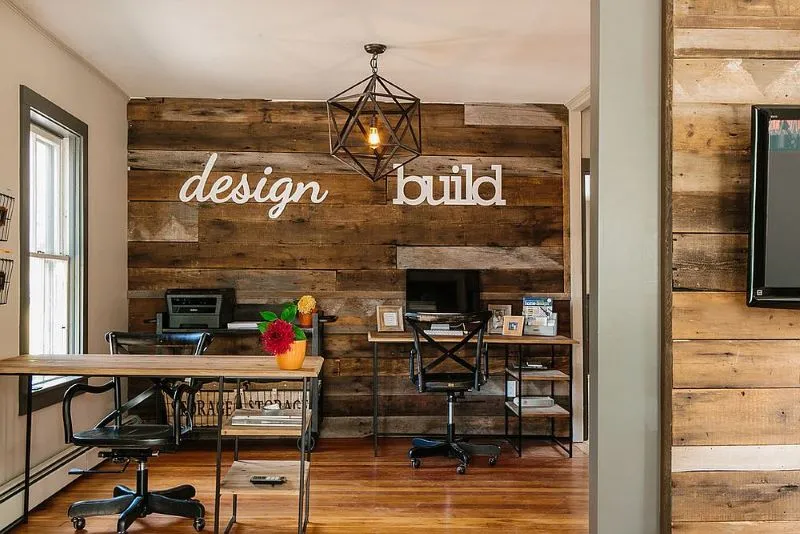
Key Features:
- Reclaimed light timber: Maple / Pine / Beech / Ash
- Sustainably-sourced woods: Bamboo / Teak / Oak
- Wood furniture: Shelving / Tables / Chairs / Bartops / Barrels
Eye to the sky
Ceilings are having their moment in the design spotlight. From hanging plants to skylights and statement ceiling designs to circadian lighting installations, the ceiling is the next frontier for interior designers and architects.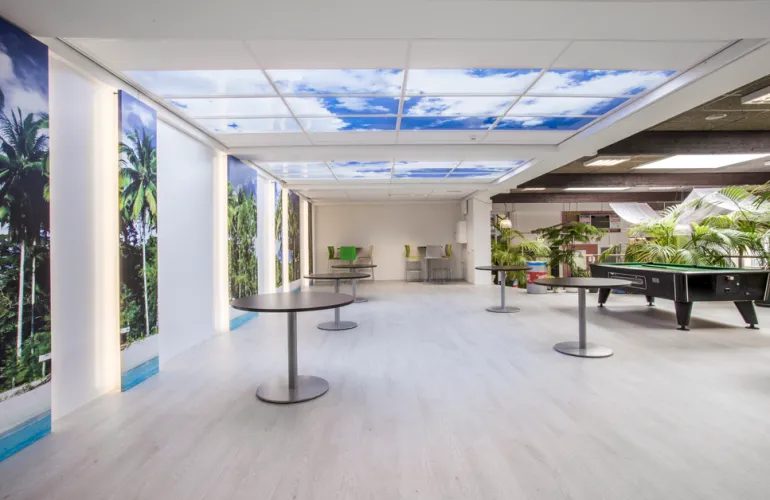
Key Features:
- Bright, inspiring colors
- Shapes and patterns
- Views of nature
Green integration
Green Integration builds upon existing biophilic design trends like “Biophilically Designed” and “Second Nature”,by expanding the scope of plant-based design features within the built environment. Trends data suggest that architects and designers are increasingly integrating plants, green walls, and large green installations, and more into designs during pre-construction and renovations, rather than adding them post-completion as a secondary aesthetic choice.
Biophilic Design is growing up, and this is the beginning of the paradigm shift.
Key Features:
- Plants / Trees / Shrubs
- Living Green Walls
- Green Dividers
Lighting 2.0 / Biodynamic lighting
Biodynamic lighting is the next evolution of commercial lighting. This trend introduces lighting systems that mirror natural sunlight conditions within the built environment which help to regulate your circadian rhythm. These lead to improved sleep and mood regulation regardless of your proximity to a window. Researchers are looking to pinpoint intermittent impact levels and timing. This is a major shift in the role of lighting.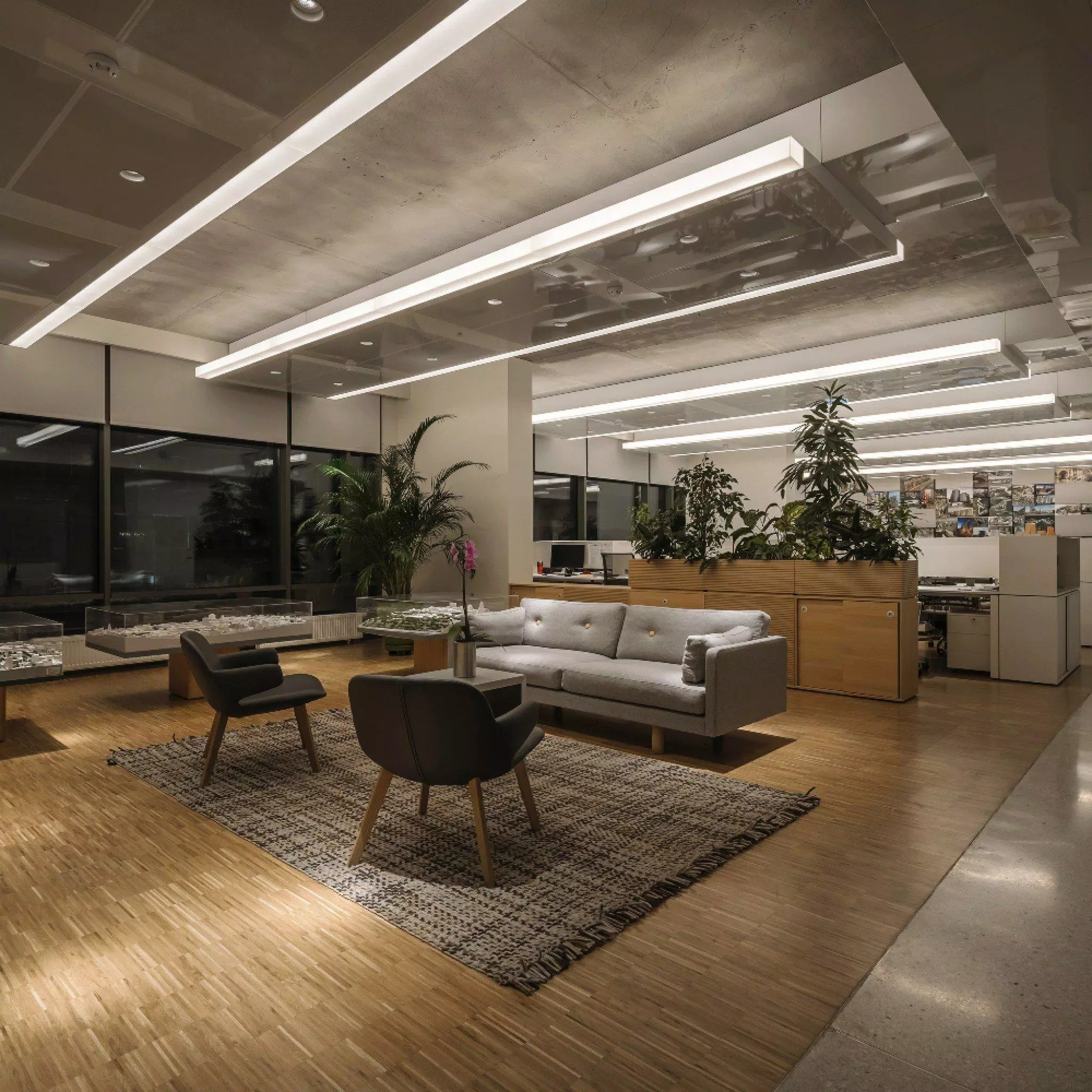
Key Features:
- Benefits sleep patterns and mood regulation
- High-quality and efficient lighting
- Reduces facility energy costs
Divide & prosper
The wellness design trend put people and function squarely at the center of design. This new focus created new challenges within the popular open plan office landscape. Enter the green wall divider, a revolutionary new space-enhancing element that provides resolution to many of the challenges facing open office environments everywhere. Green dividers are agile and adaptable for dynamic workspaces while also incorporating a natural biophilic component at minimal cost and invasiveness.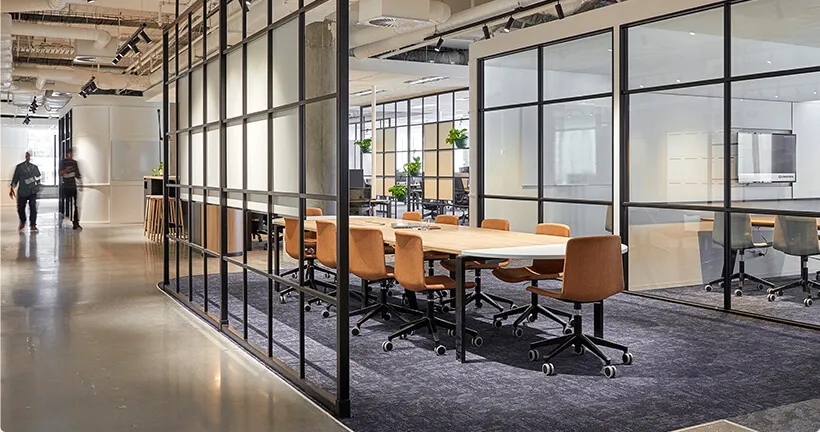
Key Features:
- Agile and flexible features
- Noise reduction benefits
- Creates privacy in open plan and dynamic environments
Flooring & restoring
Carpet and flooring designs are taking biophilia seriously. They are incorporating uniquely biophilic design characteristics such as natural stone, wood, forest floors, and more into their concepts. The goal is to create natural textures for floors that have the same distinct qualities as natural environments such as the forest floor, a meadow, or a riverbed.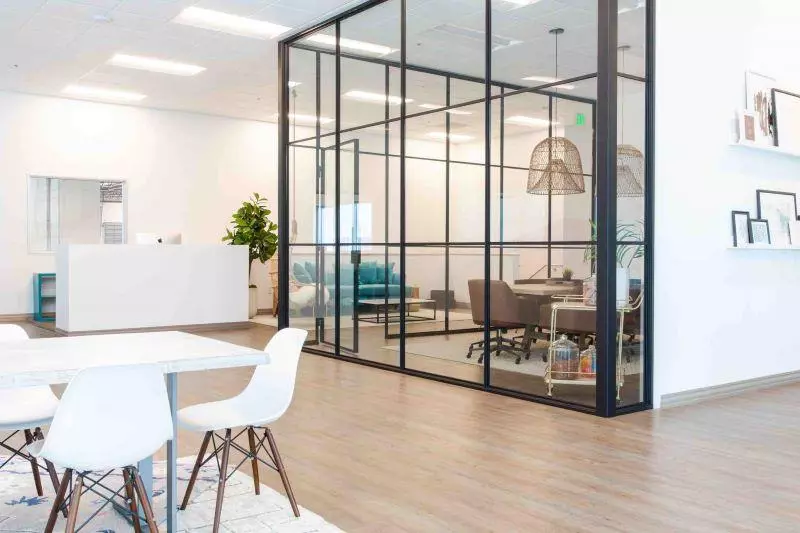
Key Features:
- Textured flooring
- Inspired by natural environments (forest floor, riverbed, stone, etc…)
- Adds a burst of color to the built environment
Healthy Office Design & Workplace Wellbeing
There has never been a better time to think about incorporating biophilic design, healthy interior strategies and workplace wellbeing design into your offices. As Wellbeing Champions, we align your office with healthy building certifications such as well and fitwel, whether you opt for formal certification or not. Beyond certification, our role on an office building might be as biophilic design consultants advising architecture or interiors studios, focusing on healthy materials to ensure improved indoor air quality post-occupancy, or working with an employer to align their workplace with sustainability, wellbeing and ESG.